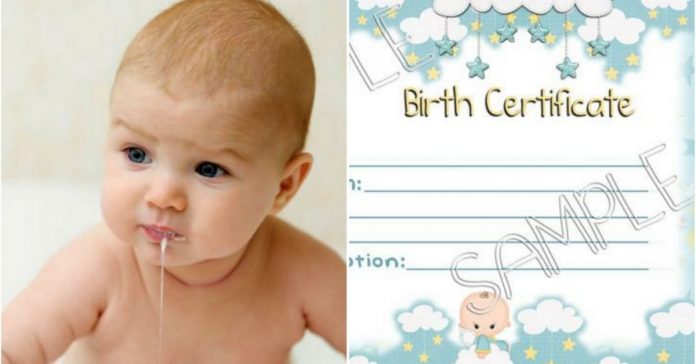
According to the Indian Government, getting a birth registered is that the right of each child. Birth registration may be a permanent and official record of a child’s existence, and in India, the oldsters must provide this to the kid. On a Governmental front, getting birth registered is significant for a nation’s development because the method involves the gathering of knowledge on statistic (number of births and deaths). It’s an important element of national planning for youngsters since it provides a demographic base also.
While the method of getting a birth certificate can’t be coordinated by anyone aside from the right authorities, adults who don’t have a certificate should visit the Municipal Corporation or Gram Panchayat of their place of birth and follow the procedure.
The processes of getting a certificate are often quite simple if the applicant is following the proper steps. They need to supply details like place, date, and time of birth to the registrar. They need to submit the specified documents like Aadhaar card, an academic certificate and address proof and pay the nominal registration fees. They issue the certificate after verifying all the documents and knowledge provided.

When handling an equivalent process through the web site, the sole difference is that it coordinates the running close to get this done. Overall, the web site has all the knowledge and forms needed to handle this process while they coordinate between the proper departments to urge this done.
Here are some of the principles when coordinating for a birth certificate. The candidate has got to apply for a certificate within 21 days of their child being born. However, if the birth isn’t registered within that point for any reason, it is often registered under the Delayed Registration provisions. The applicant will need to pay a late fee in such cases. The longer spent between registrations, the tougher the method becomes since the knowledge gathered at the time of birth could be misplaced at a later point by the hospital or clinic, which happens since it’s usually provided on the certificate. If the kid is born at a hospital, the medic responsible must issue a letter that ought to even be submitted.
Other than the method of registering for a certificate, the website also can assist with various other tasks. They will use it to use for copies of the certificate if the one that the individual had was misplaced. They will use it to form changes to the content on the certificate issued if there are errors and typos. The website features a lot of data about the certificate application process and every one of the forms which will be downloaded and filled out on paper if an applicant or an applicant’s parents don’t want to handle it online but at the office itself. Furthermore, if any questions need to be answered, those also can be tackled on the website through the contact information there.
The certificate is that the first right of the kid and therefore the initiative towards establishing its identity. It has some primary rules and uses that the majority of other documents cannot provide.
A number of these are:
● Admission to colleges
● Proof of age for employment.
● Proof of age at marriage.
● Establish parentage.
● Proof of age for enrollment in Electoral Rolls.
● Proof of age for insurance purposes.
● Register within the National Population Register (NPR).
The statistics of India supported the Civil Registration System conducted a survey in 2013, which had some pretty interesting findings.
● The level of registration of births increased from 84.5% in 2012 to 85.5% in 2013, which showed a big improvement across one year. The share of male birth registration is 53% which is quite female birth registration of 47%.
● Based on information received from 28 States or Union Territories, the share of institutional births to total registered births is 71.9%. They also created targets and 17 States or Union Territories achieved the target of cent per cent level of registration.
● 13 among 20 states crossed 90% registration of births. These include Andhra Pradesh, Assam, Gujarat, Haryana, Karnataka, Kerala, Maharashtra, Odisha, Punjab, Rajasthan, Tamil Nadu, Telangana and West Bengal.
● The registration services are decentralised spreading across all States and Union Territories with 200,000 registration centres. 98% of those centres are in rural areas and about 2% in urban areas.
If the birth wasn’t registered within a year, it is often done any time after by submitting the affidavit before the primary class magistrate or executive magistrate. The magistrate verifies the small print and if found satisfactory, issues the order to Registrar to enter the entries of birth within the birth register.
Even Indians living abroad need to register for birth certificates if that they had a toddler who wasn’t born in India. They will contact the Indian missions abroad to register the birth of youngsters any time. The house Ministry issued an order delegating powers to the heads of Indian missions abroad to register the birth of youngsters even after expiry of 1 year under Section 4 of the Citizenship Act, 1955.
In the country, however, if the method isn’t handled through the Registrar face to face, it are often done through the certificate registration website. The web site has all the forms and other documents that one may need if they’re browsing the registration process.
Source: Free Press Journal


































